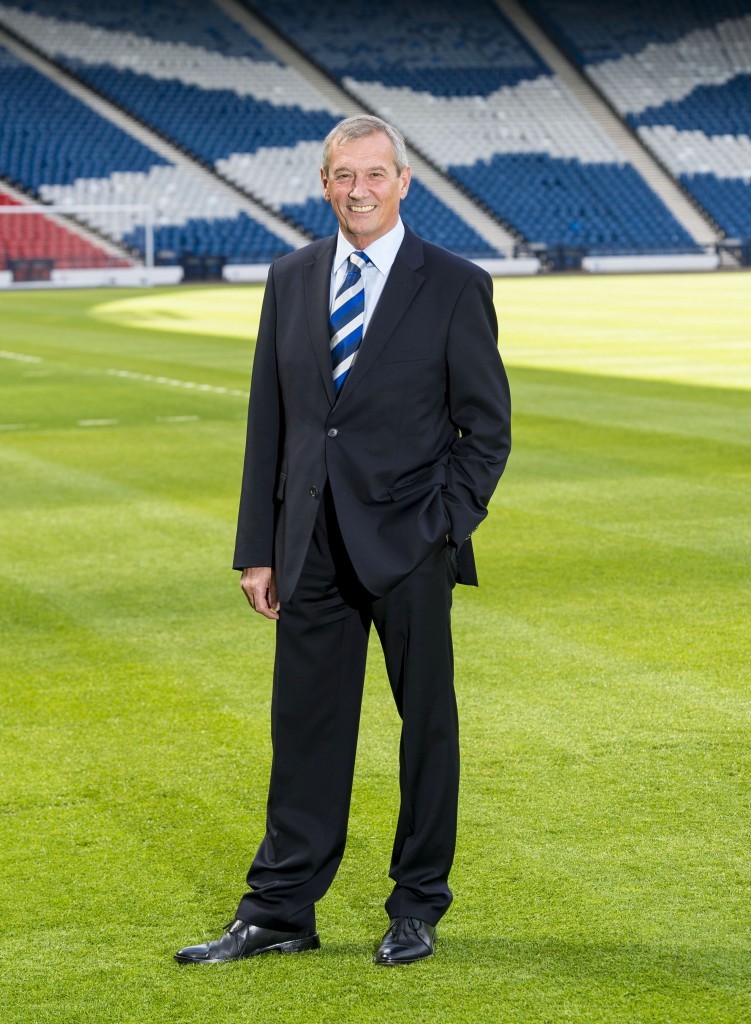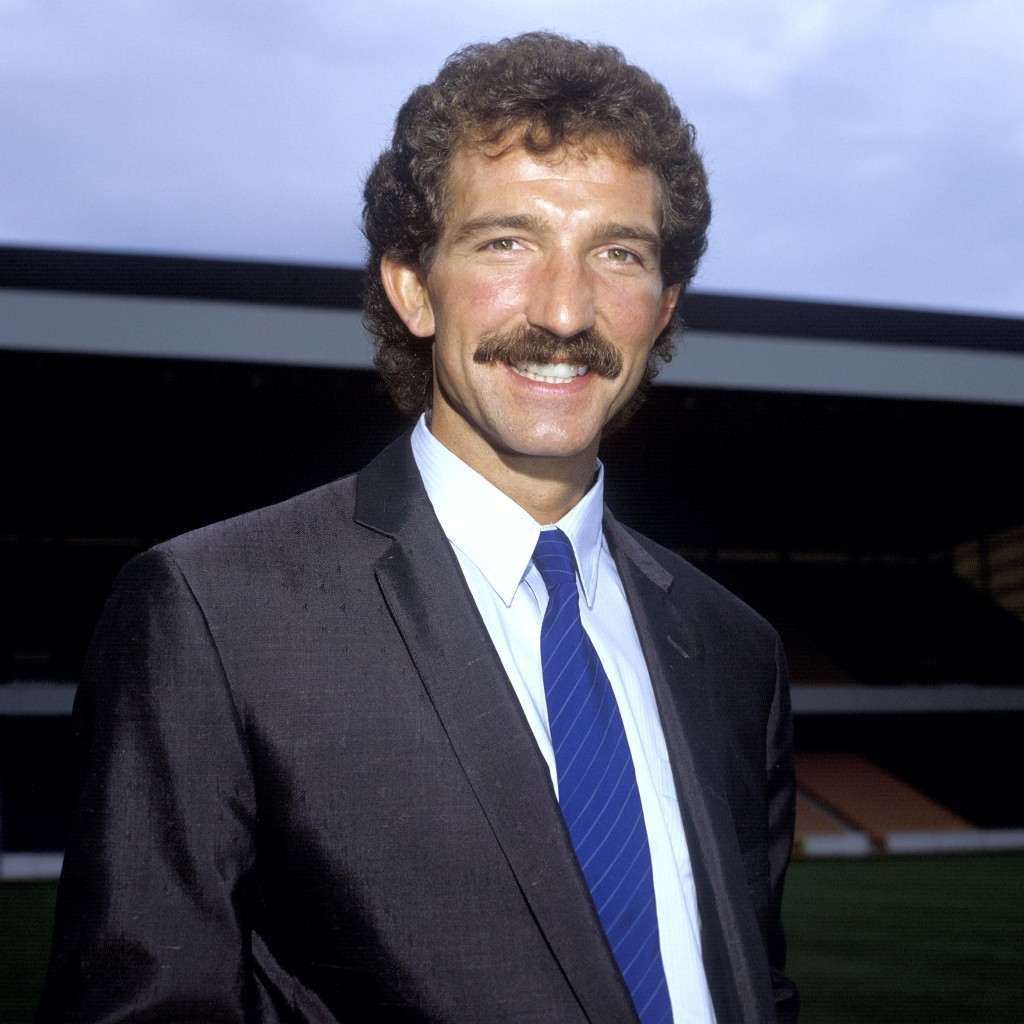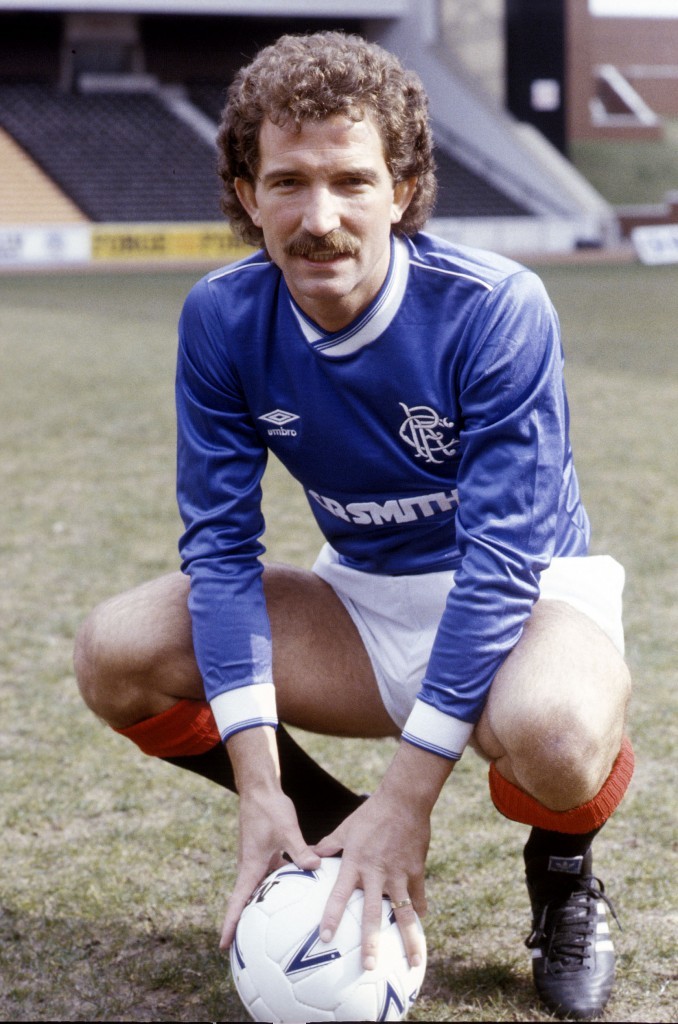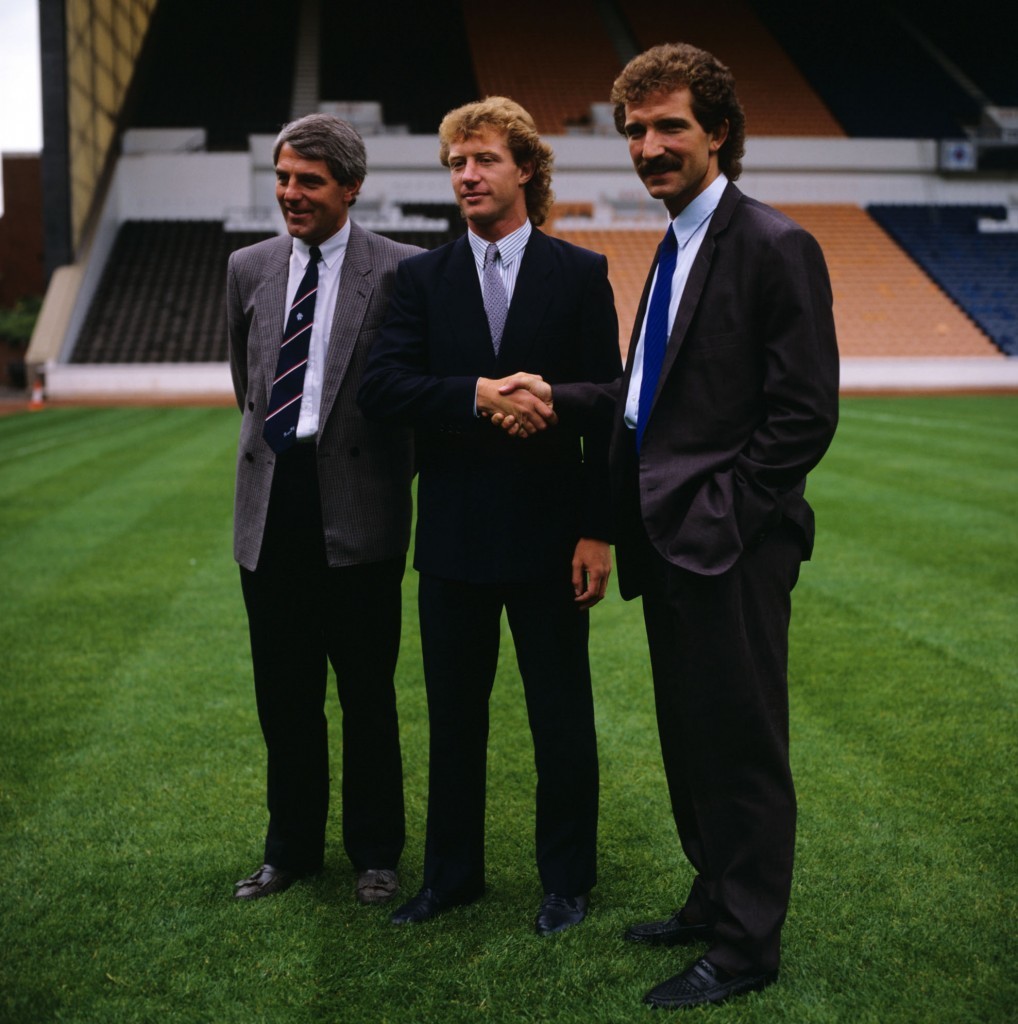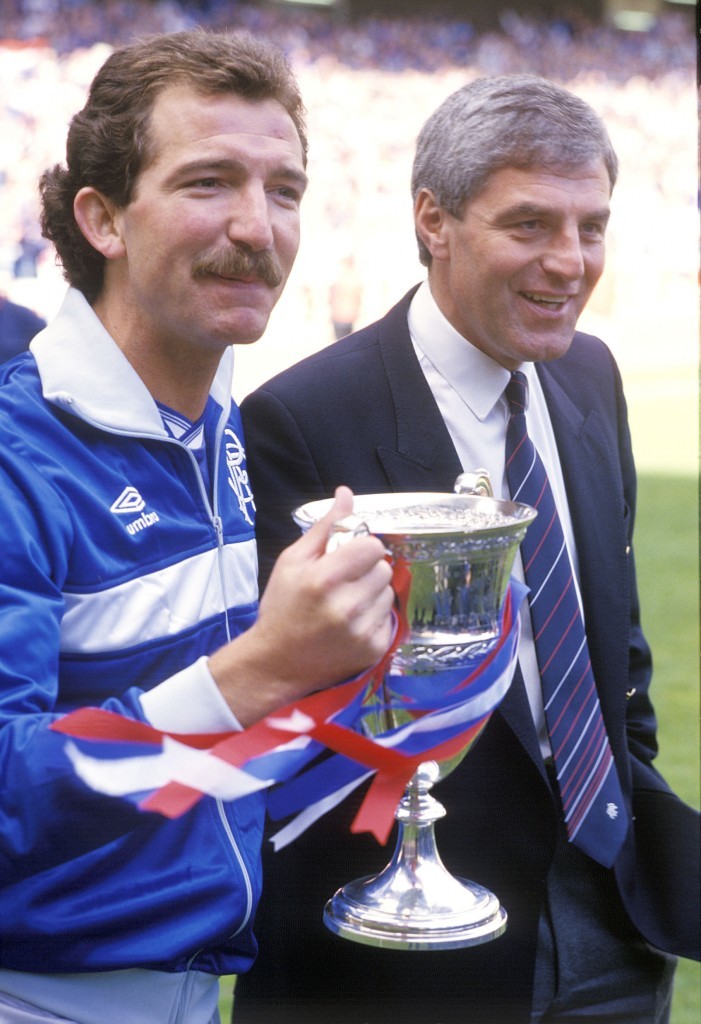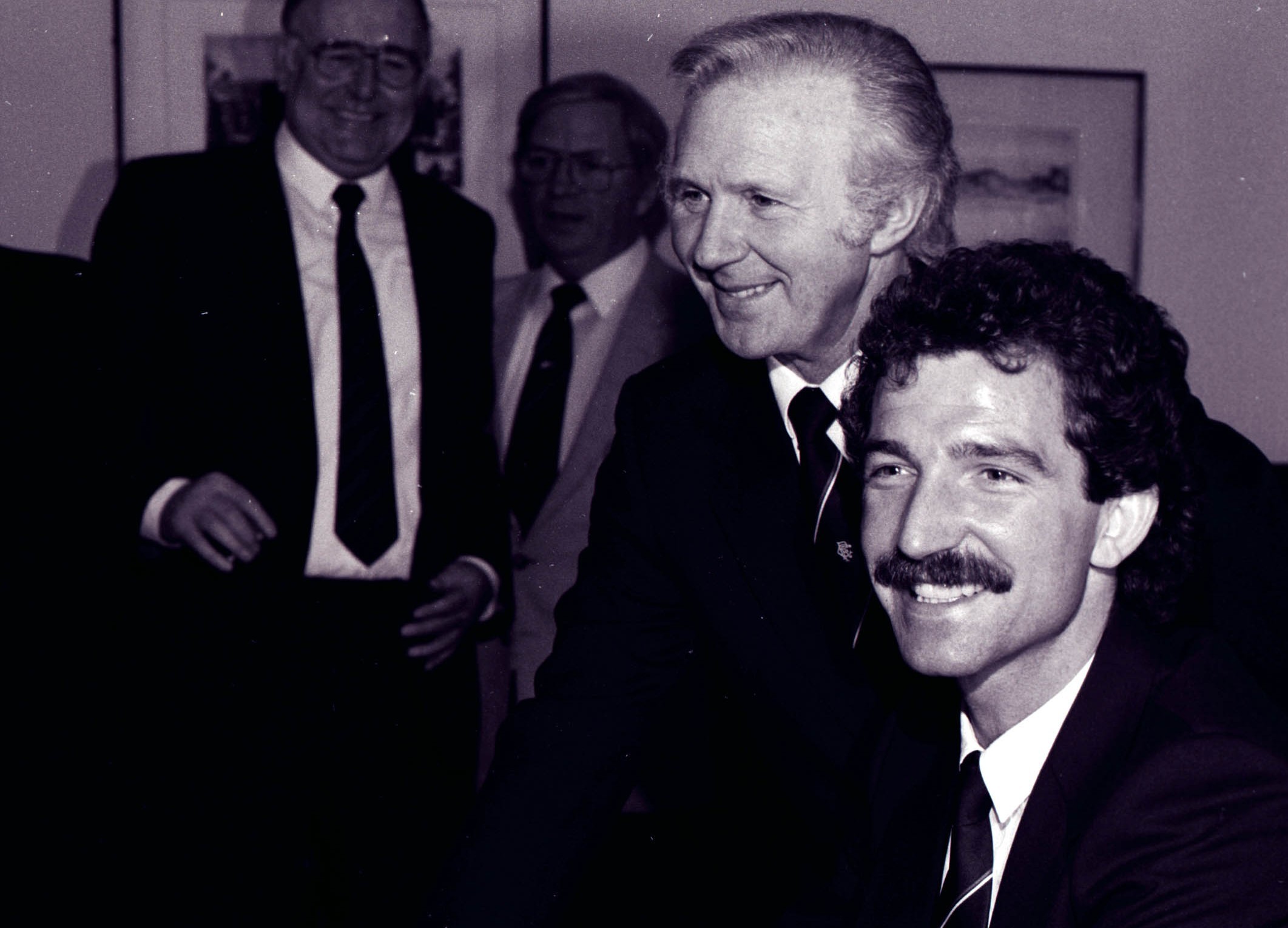
On Thursday, it will be exactly 30 years since his appointment as Rangers manager shook Scottish football to its core and revolutionised the domestic game.
Appointed by chief executive David Holmes when the club was owned by Lawrence Marlborough, Souness spent almost five years in charge.
In his first season, he led the club to their first Championship success in nine years, and also attracted some of Britain’s top players north of the Border.
In his role as club secretary and then as a director, Ogilvie was in constant contact with Souness.
That could be accompanying him to Park Gardens for a showdown with the SFA, or the secret signing of Maurice Johnston in an Edinburgh car park that was almost rumbled by a group of British Rail workers.
Ogilvie smiled as he recalled those days.
In an exclusive interview he recalled: “Attendances at Ibrox were down at 12-14,000 for some games, and it was clear something had to be done. The club hadn’t won the League title for eight years.
“David Holmes really wanted to take Rangers to a different level and wanted Graeme to do it.
“I was surprised news didn’t leak out about the move to get him as manager. I had known about it for a few weeks, and there was a great feeling when we got him.
“The club had a standard wage structure for players across the board back then, something in the region of £350 per week.
“Graeme abolished that. He wanted to attract the very best and had to offer good money to get the likes of Terry Butcher and Chris Woods to join the club.
“English clubs were banned from European football at that time and that helped us. But I still think Graeme’s standing in the game and persuasive nature would have landed them, regardless. He had that aura.
“Graeme was great to work with. Mind you, I think he could often see me far enough!
“I’d usually want to speak to him when I had an SFA or SFL rulebook in my hand! We shared the car a few times to Park Gardens when he was asked to appear. That presented one or two challenges along the way.
“I remember being on the SFA Council when I was at Rangers, and was part of the Disciplinary Committee. During one meeting, I was asked to leave the room four times because we weren’t allowed to be involved in any situations involving our own clubs. On the positive side, Graeme introduced a change of dietary habits. He brought in a ballet teacher to teach the players new exercises, and he didn’t allow players to play golf. He was ahead of his time.”
The signing of Mo Johnston in July, 1989, was the most sensational transfer in Scottish football history.
The prolific striker had agreed to join Celtic from Nantes, but then U-turned to sign for their greatest rivals and become the club’s first-ever high-profile Roman Catholic player.
Some Gers fans were furious at that tradition being broken.
Ogilvie recalled: “I wasn’t involved in contract negotiations but I was involved with contract registrations.
“The signing of Maurice Johnston was a major one for many different reasons that have been well documented. That happened during David Murray’s time. David took over in 1988 and forged a close relationship with Graeme.
“I was appointed a director of the club on the same day Maurice signed. I remember looking out the window on to Edmiston Drive.
“A crowd had gathered, and there was a guy burning his Rangers scarf and I thought to myself: ‘This guy has taken my appointment really badly!’
“The deal with Maurice was done, but we still had to get him to sign the registration form. This was a few days before his signing was announced publicly, so it was all still under wraps.
“The chief executive, Alan Montgomery, and I had to go through to Edinburgh to do it, and agreed to meet at the old Royal Scot Hotel which is now the Marriott.
“Maurice arrived with his agent, Bill McMurdo, and our cars parked alongside one another.
“I was gathering the relevant paperwork and then noticed in my rearview mirror a British Rail van with a dozen workers parked behind us, and then get out with their luminous vests on to eat sandwiches for their lunch break.
“Maurice got out of his car, with a baseball cap and sunglasses on, and climbed into my car.
“Bearing in my mind the transfer wasn’t public knowledge, we were nervous Maurice would be spotted – but thankfully he wasn’t.
“So he signed for Rangers in that car park in front of an unsuspecting group of workers.
“That signing was a very bold move by Graeme and David Murray. But he scored the winning goal against Celtic at Ibrox and his Rangers career took off after that.”
As much as Souness and the players grabbed the headlines, Ogilvie felt the most significant person in it all was David Holmes.
Ogilvie stressed: “I’d been at the club since 1978.
“There was no commercial department and David Holmes really got that going and started attracting big businesses. Season-ticket sales took off and we got about 40,000 for most home games.
“David was very influential. He and his wife Betty were very keen to improve many aspects within the club. They created a real family
atmosphere around the club between players, staff and the Board.
“They wanted to see
everyone gelling. They opened a creche on match day and wanted every player, wife and child to enjoy life.
“David was a forward-thinking, strong character. He maybe hasn’t received the credit he deserved.”
Souness left Ibrox towards the end of the 1990-91 season to take over at Liverpool. His assistant, Walter Smith, succeeded him and led Gers to the title a few weeks later after a dramatic last-day
victory against Aberdeen.
Ogilvie concluded: “I was sad to see Graeme leave. But there were a few signs that things were building up and that life in the ‘goldfish bowl’ in Scotland wasn’t to his liking.
“Walter was terrific for them and they worked very well as a partnership.
“I was delighted Walter was given the opportunity to take over from Graeme – and he continued the great success the club was enjoying.”
READ MORE
Rangers denied Championship title by 94th minute goal
Michael Mols hopes Rangers don’t go overboard with loan signings

Enjoy the convenience of having The Sunday Post delivered as a digital ePaper straight to your smartphone, tablet or computer.
Subscribe for only £5.49 a month and enjoy all the benefits of the printed paper as a digital replica.
Subscribe